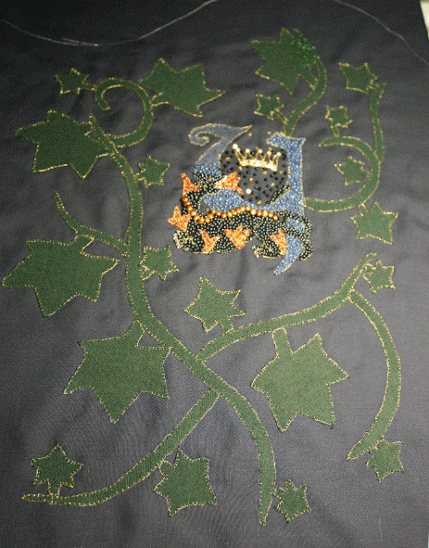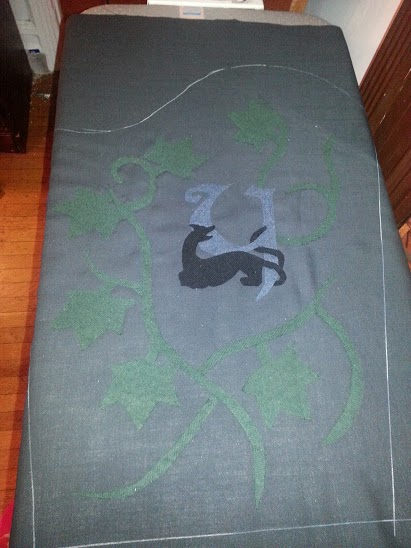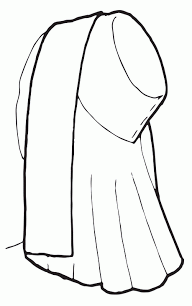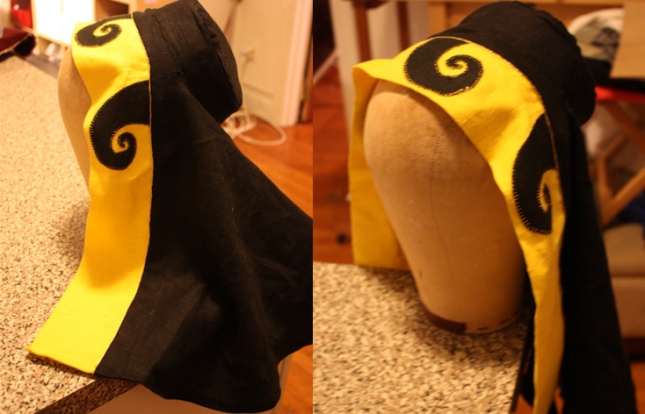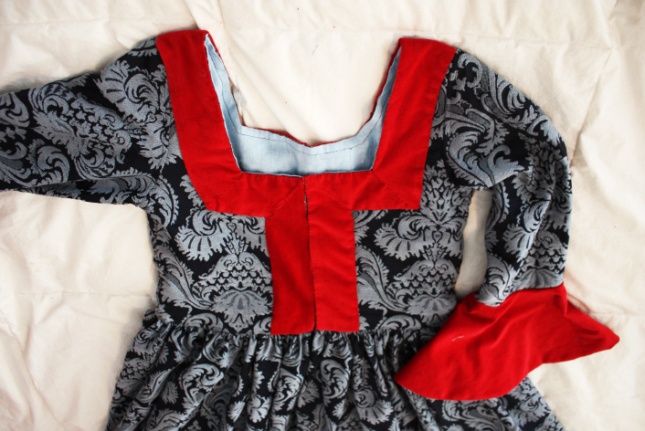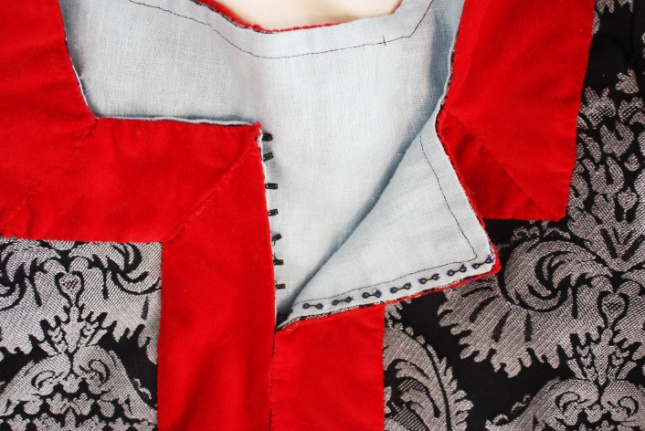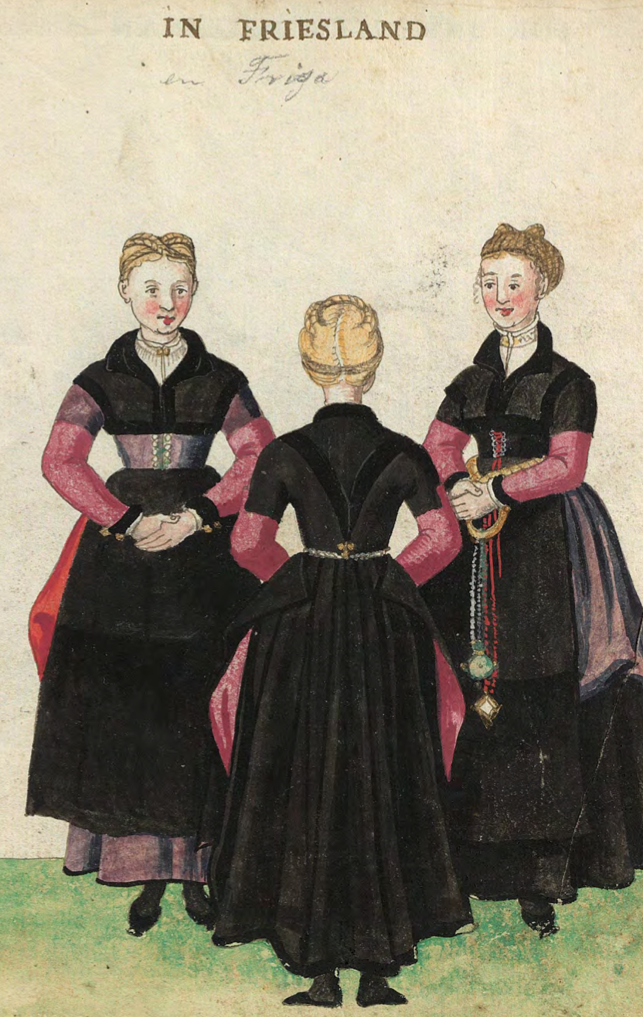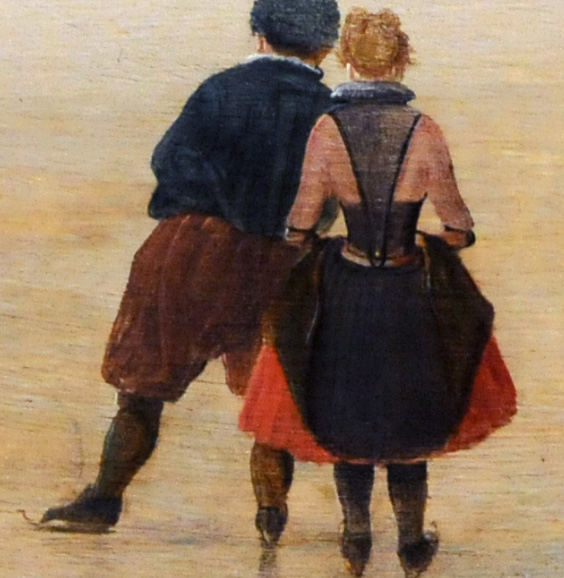Concept art
This is based on the door, which is used on the sleeve of the incoming Baroness’ dress.

Armature
The structure is a combination of wire mesh and plaster. At this stage it could be a salamander. It could be a duck. Or a really strange loaf of bread.
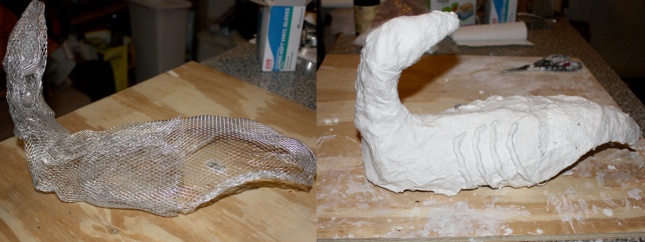
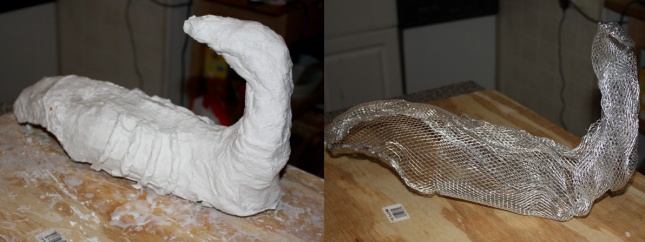
Finished structure
It looks more like a salamander with all the plaster on. You can see the final shape.

Sugar application

Finished
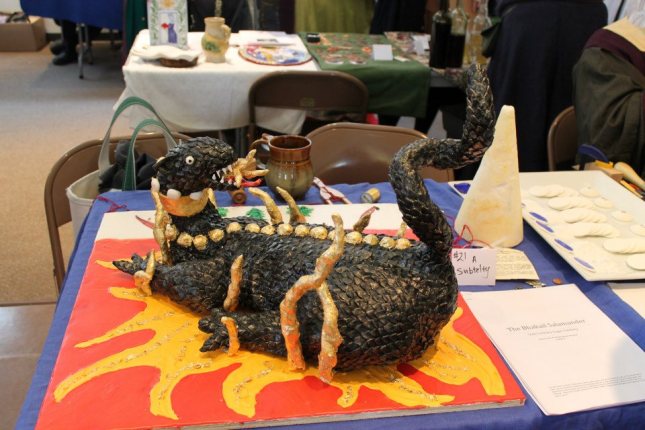
Lessons learned
Gilt application
I did not particularly enjoy this step. I played with gold leaf. I went with 23K edible leaf because I will want to use the left over leaf on food at some point. I tried 5 different methods of application, tragacanth, arabic, honey, glare and breath. The arabic seems to work the best, followed closely by breath on the dried sugar.
Tragacanth worked … funny. Maybe because there is tragacanth in the mix, but I don’t really know. The glare caused the paste to get too gummy. The end result is some of the leaf stuck well. Some of it sticks out off the flames in a weird hybrid of 1/2 on 1/2 off fashion, but the end result makes it look like “living flame”. Whatever. It’s on and I’m done. And for the record, leaf is a PITA to work with. It is fiddly, and delicate, and a wee bit persnickety.
Period pigments
I discovered an interesting side effect to using powdered illumination pigments, quite by accident. And it’s awesome. I left my red pastry paint at home, quite by accident. I remembered to pack the illumination pigment baggies that Holly and Heather gave me. In the bag that Holly sent was a lovely red. I donned gloves and went about mixing the pigment into the sugar paste as if it were a powdered food coloring. The pigment is designed to be used by scribes, but worked very well to color sugar paste. The gum tragacath/egg mixture has enough moisture to rehydrate the powdered pigment with out adding additional moisture to the paste. It was so super easy to use. The color was less bright than a modern color and that was perfect. I then painted a very fine layer of re-constituted pigment (with gum arabic) to the dried paste. I didn’t need a lot of pigment to color the paste. I am very glad for this mistake. I want to try more pigments now. It will increase the cost slightly. But it really isn’t much more expensive than the powdered food colors I currently use. I would probably get the synthetic versions of the truly toxic paints. This could be “very exciting” ™.
Documentation:
Here is the documentation for KQAS.Documentation Salamader
